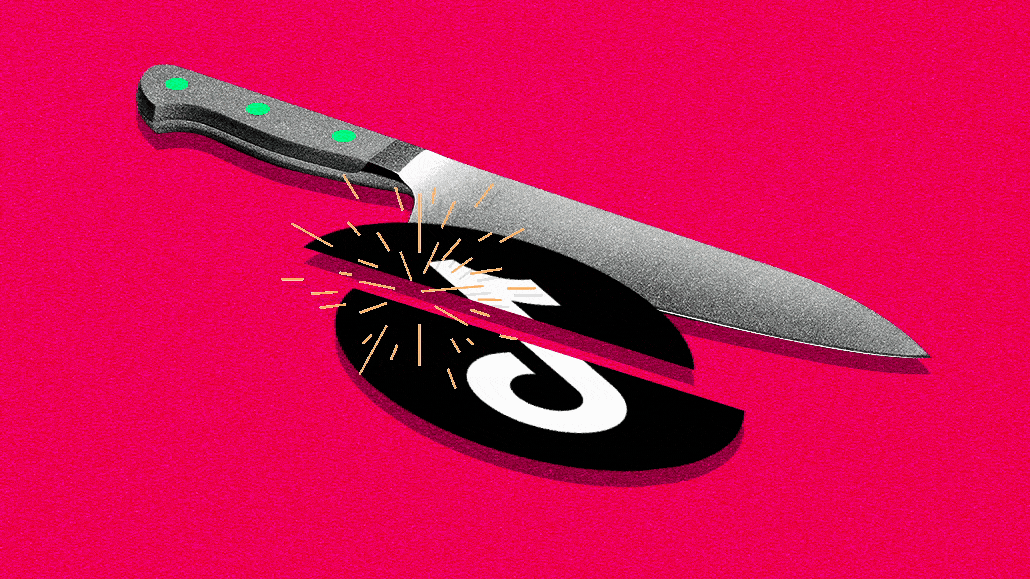By Antoinette Siu • December 20, 2024 •

Ivy Liu
With TikTok’s potential U.S. looming ban as early as January, creators and agencies are split: some see it as inevitable, while others are convinced it won’t stick.
The rift has simmered since TikTok’s future was first questioned but has only intensified as the stakes climb — highlighted by the Supreme Court’s decision this week (Dec. 19) to take up the app’s appeal against a U.S. law that could pull the plug next month.
As organizations put contingency plans in place, some creators and marketers say they aren’t all that worried about TikTok getting pulled.
One reason is that most creators today already diversify their content beyond just one platform, whether it’s TikTok, Twitch or YouTube. It’s become a ubiquitous practice that agencies recommend to clients, as well as a model that creators themselves follow to maximize earnings.
“Creators are always at the mercy of the platform, so ensuring they have a presence in multiple places is critical for longevity,” said Nickey Rautenberg, director of content performance at influencer agency HireInfluence. “[On the client side], we almost always have a set of deliverables that doesn’t just include TikTok.”
This pragmatic approach has surprised some agencies, who expected more turbulence from the latest twist in what feels like a never-ending saga over TikTok’s fate in the U.S. But much of the creator economy seems unfazed, chalking it up to lessons learned from past platform disruptions — and, as Neil Waller, co-founder and co-CEO of Whalar Group, pointed out, the widespread belief that a ban simply won’t happen.
“We’re not seeing much of a reaction from creators to it,” Waller said. “I think that the reality is, there has been turbulence in the past in the U.S. with TikTok — so it’s not like this is the first notion of it. So it’s just, like, roll with the punches.”
That resilience Waller’s getting at harks back to TikTok’s first brush with a U.S. ban during Donald Trump’s precedency. Back then, Trump signed an executive order to force the sale or shutdown of TikTok. This was then delayed several times until President Joe Biden took office and signed the Protecting Americans from Foreign Adversary Controlled Applications Act.
At the moment, agencies are doing what they can to make recommendations for the new year.
Alyssa Stevens, global director of PR, social media and influencer marketing at independent agency Connelly Partners, said anecdotally that she has not heard concerns from the client and partner side. Through social listening reports, Stevens said TikTok creators are spreading the word about their other social accounts to their followers.
Recently, the agency began adding a line item to 2025 contracts to continue to deliver short-form content on alternative channels in the case of TikTok’s removal.
From the creator’s perspective, TikTok influencer Roxy Couse also thinks this move motivated her to expand her reach elsewhere. This year, Couse mentioned adding her content on Instagram and LinkedIn and saw her Instagram following grow from “approximately 4,000 at the beginning of the year to 148,000 now.” Her LinkedIn following also went from around 1,500 to more than 4,000.
“Additionally, I’m encouraging my audience on TikTok to follow me on my other platforms,” Couse said, adding that creators should also consider omnichannel approaches with email lists or blogs.
Even if TikTok goes away, the trends around short-form videos or commerce won’t — as those products are no longer unique to TikTok.
Beauty and fashion influencer Valeria Lipovetsky, who is also chief creator officer at influencer marketing platform Humanz, mentioned attracting primarily a millennial audience, but is trying to court more Gen Z on other apps. If TikTok gets banned, Lipovetsky said she could see those followers “shifting to platforms like Instagram and, to a lesser extent, YouTube Shorts.”
Lipovetsky agreed that “the demand for scrolling through short-form, full-screen video isn’t going anywhere — it’s become a fundamental part of how audiences consume content… Instagram, in particular, would likely see a surge in users, creating more chances for creators of all sizes to grow their audiences.”
If TikTok ultimately finds itself out of the picture, competitors would reasonably grow their share of the advertising pie and attract more creators too. For the first time, Instagram is projected to make up more than half of Meta’s U.S. ad revenue in 2025 (or some $32 billion, up 24.4% over 2024), per eMarketer. In fact, Instagram has already been “courting TikTok creators and advertisers since the law was passed, including by improving discovery for smaller accounts and allowing users to trial Reels before posting more broadly,” noted Jasmine Enberg, principal analyst at eMarketer, in a report this week.
Instagram earlier this month added a “trial reels” option aimed at creators who can test content with non-followers before sharing it with their audience. “If the TikTok ban is enforced in 2025, Instagram could capture over one-fifth of reallocated TikTok ad dollars in the U.S.,” Enberg added.
https://digiday.com/?p=564049

